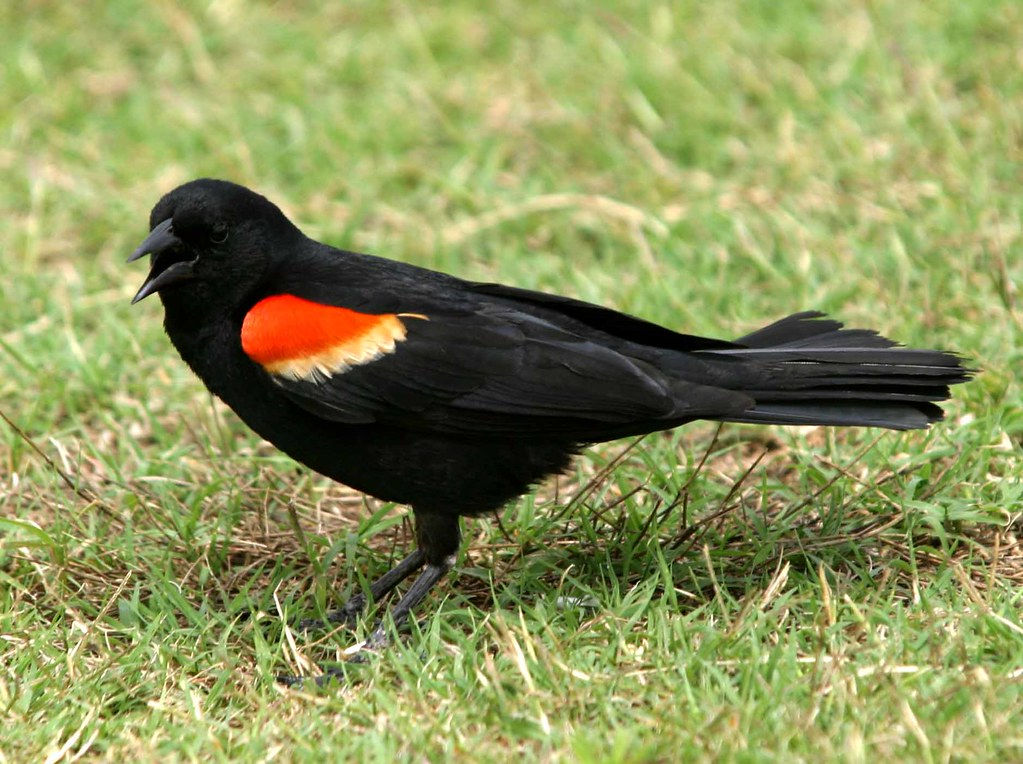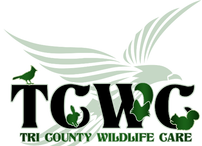The Red Winged Blackbird
|
This very boldly colored bird is one of the most abundant birds in North America - the red-winged blackbird. We have three common blackbirds in this area: the red-winged, a very similar looking tri-colored, and the brewer's blackbird.
The Red-winged blackbird and Tri-colored blackbird males are glossy black and differ only by a contrasting stripe on the shoulder. The red-winged blackbird has a red patch and a yellow stripe on the shoulder where the tri-colored blackbird has a red patch with a white stripe. Depending on how bold the red-winged blackbirds birds feel, they can puff up these colored feathers or almost completely hide them. These pretty colors are on the male; the female, as usual, is a subdued streaky brown. Along the coast of California, we have a variant of the red-winged blackbird that lacks the yellow stripe and is referred to as the bi-colored blackbird. It is surmised that the lack of the third color helps them with identification where their territory overlaps with the tri-colored blackbird. These blackbirds are commonly found during the breeding season around cattail marshes and any place there is standing water. They frequently perch on telephone wires above or near wetlands and along wet roadsides. In the winter, they mix with other types of blackbirds and starlings in large flocks. In some areas, flocks can number in the millions. Early morning, they leave the roost and will travel up to fifty miles to find food and return to the roost at night. Red-winged blackbirds eat insects during the summer, and then in winter change to seeds, corn and wheat. They also eat ragweed and native sunflowers. Different environments affect the size and proportions of these birds. In an experiment, nestlings were moved to a different population and put with foster parents. They grew up to match the size of their foster parents rather than their biological parents. Here is a case where nurture overruled nature and their genetic makeup. The female places the nest near the ground, or close to the water surface, in dense vegetation like cattails and sedges. In upland areas, they place the nest in goldenrod, blackberry, willow or alder trees. The nests are built with stringy plant material wound around a few close upright stems creating a platform. To this she adds wet leaves, decayed wood and lines with mud to form a cup. Fine, dry glasses line the nest. Imagine using 34 strips of willow bark and 142 two-foot cattail leaves to create a nest measuring 4 to 7 inches across and 3 to 7 inches deep. Red-winged blackbirds really "get around." They may have as many as 15 female mates. Even though the male has multiple females in his territory, one-quarter to one-half of the off-spring are sired by another bird. The males spend more than a quarter of the day defending their territory. They chase out other males, attack other birds preying on the nest, and will even attack horses and people! Considered one of the most abundant birds on the continent, their numbers have declined by over 30% between 1966 and 2014. These ground-feeders may visit your backyard. Give them a helping hand by spreading mixed grains and seeds on the ground for them to forage. A Red-winged blackbird found in Michigan in 1983, is the oldest ever recorded at 15 years, 9 months old. He was originally banded in New Jersey in 1967. Found injured in Michigan, it was rehabilitated and released after a full recovery. Tri County Wildlife Care, a local nonprofit started in 1994, is dedicated to the rescue and rehabilitation of our native wildlife and helping our community live in balance with wildlife. They envision a world where wildlife and people thrive together. For more information call (209) 283-3245, or visit pawspartners.org. |
Learn More!
|


